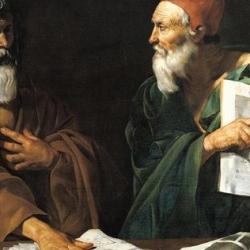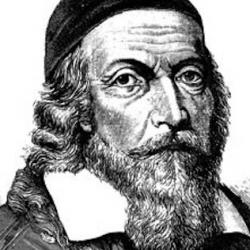It was an ancient axiom that truth comes before error. “The real thing always exists before the representation of it,” Tertullian wrote, “the copy comes later.” This means “truth comes first and falsification afterwards.”
The “always” in first statement is self-evidently false; the reality is frequently the opposite. In some cases, reality precedes representation – map before territory, God before image of God, mountain before my depiction of a mountain. But not “always”: Blueprints before buildings, strategies before battles, outline before essay, sketch in the mind’s eye before the pencil is put to paper. Ultimately, there’s a basic aporia, for the Son who is the Image of the Father is equiprimordial with the Father.
What’s behind this? I think it’s a failure to appreciate poiesis.
That failure is already suggested by the linkage of the two statements, by which real = truth and representation/copy = falsification. By what logic is a copy a falsification? By Platonic/Aristotelian logic, and no doubt many others, most others, which assume that any supplement is distant from the origin. If supplement and origin arise together (Father and Son), then copy is not (necessarily) falsification.
But to poiesis: Real precedes representation only on the assumption that human making involves a leakage of reality. On this theory, the mountain is real while the painting is not the real mountain in a different mode but an irreal mountain. On a different view of human construction, a representation can be imitative yet real, and creatively so. The purple haze I gave to the mountain wasn’t “really” there, but it captures something about the mountain that escaped the eye.
But this is just back to the issue of supplement and origin again. If supplements are necessarily pale ghosts of origins, then the thing made is a pale ghost of the real thing. If supplements are not deviations by definition, but potentially enhance and co-define the origin, then so too the artefact enhances and co-defines the thing it imitates. (Can we look at a mountain landscape now without the gaze being “distorted” by romantic era painters?)
So: Tertullian is in the grip of a pagan, tragic metaphysics.










